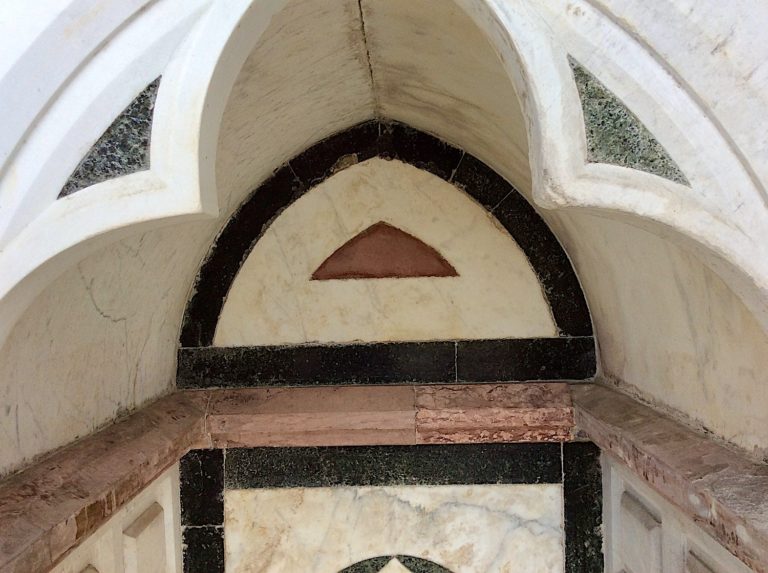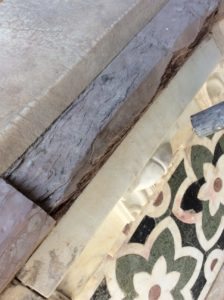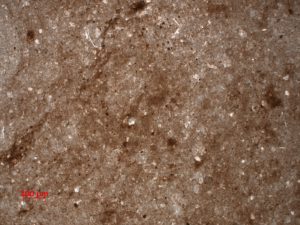
Lithotype
Red Marly Limestone
Common names
Calcare Rosso, Marmo Rosso, Marna del Sugame, Rosso Montieri, Rosso di Monterantoli, Rosso di Monsummano
Rock Classification
Sedimentary rock
The Red Marly Limestone outcrops in different provinces of the Tuscany region and mainly in the area of Florence (Greve), Pistoia (Munsummano), Grosseto (Montieri).
The material comes from the Scaglia Toscana Formation which is part of the Tuscan Nappe Unit. The age ranges between the Low Cretaceous and the Paleogene. The formation consists of several members, including that of the “Marne del Sugame”, from which the lithotype historically used, comes. This rock consists of marly limestone showing a variable colour, from dark red to gray-green. The thickness is difficult to be evaluated; in the less disturbed sequences the thickness is in the range 20-30 meters and 80-100 meters.
This limestone, of ornamental effect, has been used both for indoors and outdoors, mainly in Tuscan religious architecture from the Renaissance to the XIX century.The rock was widely used in many monuments of Firenze: for instance in the external cladding of the lateral sides, the apses and the paving of the Cattedrale di Santa Maria del Fiore, in the façades of the Basilica di Santa Maria Novella and Santa Croce.
The composition is mainly calcitic and clayey; iron oxides are also present.
MACROSCOPIC DESCRIPTION
The Red Marly Limestone displays a dark red color; it is a low-porosity, compact and polishable rock. Thin calcitic veins are common.
MICROSCOPIC DESCRIPTION
Due to the clay component and the presence of a hematitic pigment, the rock has a cloudy aspect. The microfossilferous content is abundant. Bioturbations and thin veins of calcite are frequent; the veins differ from the surrounding mass for having higher crystalline grain and for the lack of pigment.

